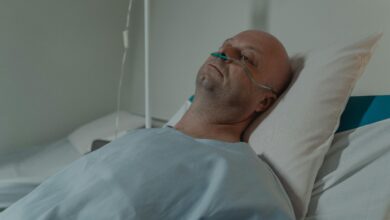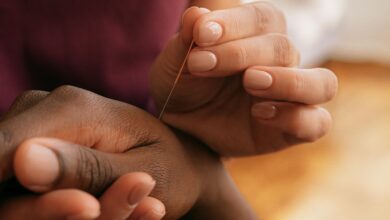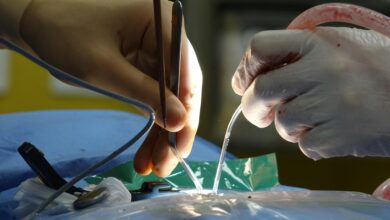The Role of Physical Therapy in Recovery: A Comprehensive Guide

Physical therapy (PT) plays a vital role in the recovery process for individuals dealing with injuries, surgeries, chronic conditions, or mobility impairments. It is a science-based healthcare discipline that focuses on improving movement, reducing pain, and restoring function through personalized treatment plans. Whether you’re recovering from an injury, managing a long-term condition, or striving to prevent future issues, physical therapy can be an invaluable component of your rehabilitation journey.
In this article, we’ll explore the multifaceted role of physical therapy in recovery, its benefits, common techniques used, and how it contributes to overall health and well-being.
1. Understanding Physical Therapy
What Is Physical Therapy?
Physical therapy involves the use of exercises, manual techniques, education, and specialized equipment to help patients regain strength, flexibility, balance, and coordination. Physical therapists (PTs) are licensed healthcare professionals trained to assess, diagnose, and treat movement-related disorders.
Who Can Benefit From Physical Therapy?
- Post-Surgical Patients: Recovering from orthopedic surgeries like joint replacements or ligament repairs.
- Injury Victims: Individuals recovering from fractures, sprains, strains, or sports injuries.
- Chronic Pain Sufferers: Those dealing with conditions like arthritis, fibromyalgia, or lower back pain.
- Neurological Patients: People with conditions such as stroke, Parkinson’s disease, or multiple sclerosis.
- Athletes: Enhancing performance, preventing injuries, and speeding up recovery.
- Elderly Individuals: Improving mobility, preventing falls, and maintaining independence.
2. The Goals of Physical Therapy in Recovery
Physical therapy aims to address specific challenges faced by patients during their recovery. Some primary goals include:
a) Pain Management
- PT uses non-invasive methods to alleviate pain without relying solely on medications. Techniques like manual therapy, stretching, and modalities such as heat/cold therapy or electrical stimulation can reduce discomfort.
b) Restoring Mobility and Function
- After an injury or surgery, muscles, joints, and connective tissues may become stiff or weak. Physical therapy helps restore range of motion and functional abilities needed for daily activities.
c) Strengthening Muscles
- Weak muscles can hinder recovery and increase the risk of re-injury. Strengthening exercises target specific muscle groups to rebuild stability and endurance.
d) Improving Balance and Coordination
- For older adults or those with neurological conditions, PT focuses on enhancing balance to prevent falls and improve confidence in movement.
e) Preventing Future Injuries
- By addressing underlying weaknesses or imbalances, physical therapy reduces the likelihood of recurring injuries.
3. Common Techniques Used in Physical Therapy
Physical therapists employ a variety of techniques tailored to each patient’s needs. Here are some widely used methods:
a) Therapeutic Exercises
- Customized exercise programs designed to improve strength, flexibility, and endurance. Examples include resistance training, stretching routines, and aerobic conditioning.
b) Manual Therapy
- Hands-on techniques performed by the therapist to mobilize joints, release tight tissues, and improve circulation. This includes massage, joint manipulation, and soft tissue mobilization.
c) Modalities
- Non-invasive treatments using devices or tools to promote healing and relieve symptoms:
- Heat/Cold Therapy: Reduces inflammation and soothes sore muscles.
- Ultrasound Therapy: Uses sound waves to penetrate deep into tissues, promoting healing.
- Electrical Stimulation: Stimulates muscles to reduce pain and prevent atrophy.
- Laser Therapy: Accelerates tissue repair and reduces inflammation.
d) Balance and Gait Training
- Exercises and activities aimed at improving stability and walking patterns, especially for post-stroke patients or those recovering from lower-body injuries.
e) Education and Lifestyle Modifications
- Teaching patients proper body mechanics, posture correction, and ergonomic strategies to avoid aggravating their condition.
4. The Benefits of Physical Therapy in Recovery
Physical therapy offers numerous advantages beyond just healing injuries. Below are some key benefits:
a) Non-Invasive Approach
- Unlike surgery or medication, PT provides a natural way to manage pain and improve function without invasive procedures or side effects.
b) Personalized Care
- Each treatment plan is tailored to the individual’s unique needs, ensuring optimal outcomes.
c) Faster Recovery
- Early intervention with PT can accelerate healing and minimize downtime after injuries or surgeries.
d) Improved Quality of Life
- By restoring mobility and independence, PT enhances overall well-being and allows patients to return to work, hobbies, and social activities.
e) Cost-Effective Solution
- Preventing complications and avoiding unnecessary surgeries or prolonged medication use can save money in the long run.
5. Physical Therapy Across Different Conditions
The versatility of physical therapy makes it applicable to a wide range of medical scenarios. Let’s examine how PT supports recovery in various contexts:
a) Orthopedic Recovery
- After fractures, tendonitis, or joint replacements, PT helps rebuild strength and flexibility while minimizing scar tissue formation.
b) Sports Injuries
- Athletes benefit from PT to recover from ACL tears, rotator cuff injuries, or concussions, as well as to enhance performance and prevent future injuries.
c) Neurological Rehabilitation
- For stroke survivors or individuals with spinal cord injuries, PT focuses on regaining motor skills, improving gait, and enhancing coordination.
d) Chronic Pain Management
- Conditions like osteoarthritis, fibromyalgia, or chronic lower back pain respond well to PT interventions that combine exercise, manual therapy, and lifestyle modifications.
e) Pediatric Care
- Children with developmental delays, cerebral palsy, or congenital disorders often require PT to achieve age-appropriate milestones.
6. How to Maximize Your Physical Therapy Experience
To get the most out of your PT sessions, consider these tips:
a) Be Consistent
- Attend all scheduled appointments and follow your therapist’s home exercise program diligently.
b) Communicate Openly
- Share any concerns, progress updates, or setbacks with your therapist so they can adjust your plan accordingly.
c) Set Realistic Goals
- Work with your therapist to establish achievable short- and long-term objectives.
d) Stay Patient
- Recovery takes time, and results may not be immediate. Trust the process and celebrate small victories along the way.
e) Adopt Healthy Habits
- Complement PT with a balanced diet, adequate hydration, and sufficient rest to support your body’s healing process.
7. When Should You Seek Physical Therapy?
While many people associate PT with post-surgical recovery, it’s beneficial in numerous other situations:
- Persistent pain lasting more than a few weeks.
- Difficulty performing daily tasks due to weakness or stiffness.
- Recent injury or accident requiring rehabilitation.
- Preparing for or recovering from childbirth.
- Managing age-related mobility issues.
If unsure whether PT is right for you, consult your primary care physician or a licensed physical therapist for guidance.




